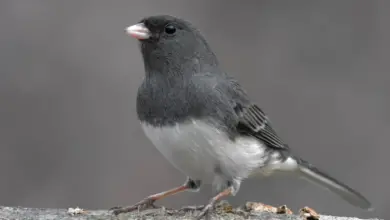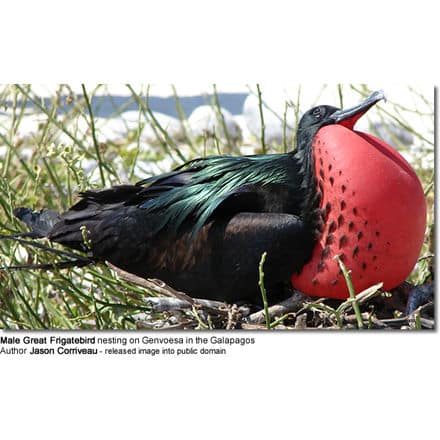Hummingbirds found in South Carolina, USA
Hummingbirds found in South Carolina USA (by U.S. State) … Canada … Mexico … Puerto Rico … Jamaica … Honduras
Hummingbird Information … Hummingbird Species Photo Gallery
The following listed (with photos) are hummingbird species that have been reported in South Carolina
Ruby-throated Hummingbirds (Archilochus colubris) – Native breeders. Arrive in late March or early April for the breeding season; return to their wintering territories in September or October.
The male has a ruby-red throat, a white collar, an emerald green back, and a forked tail.
The female has a green back and tail feathers that are banded white, black, and grey-green.
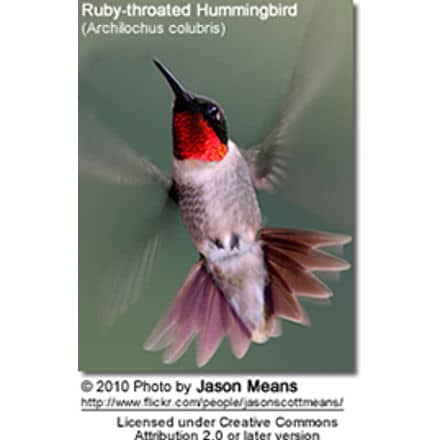
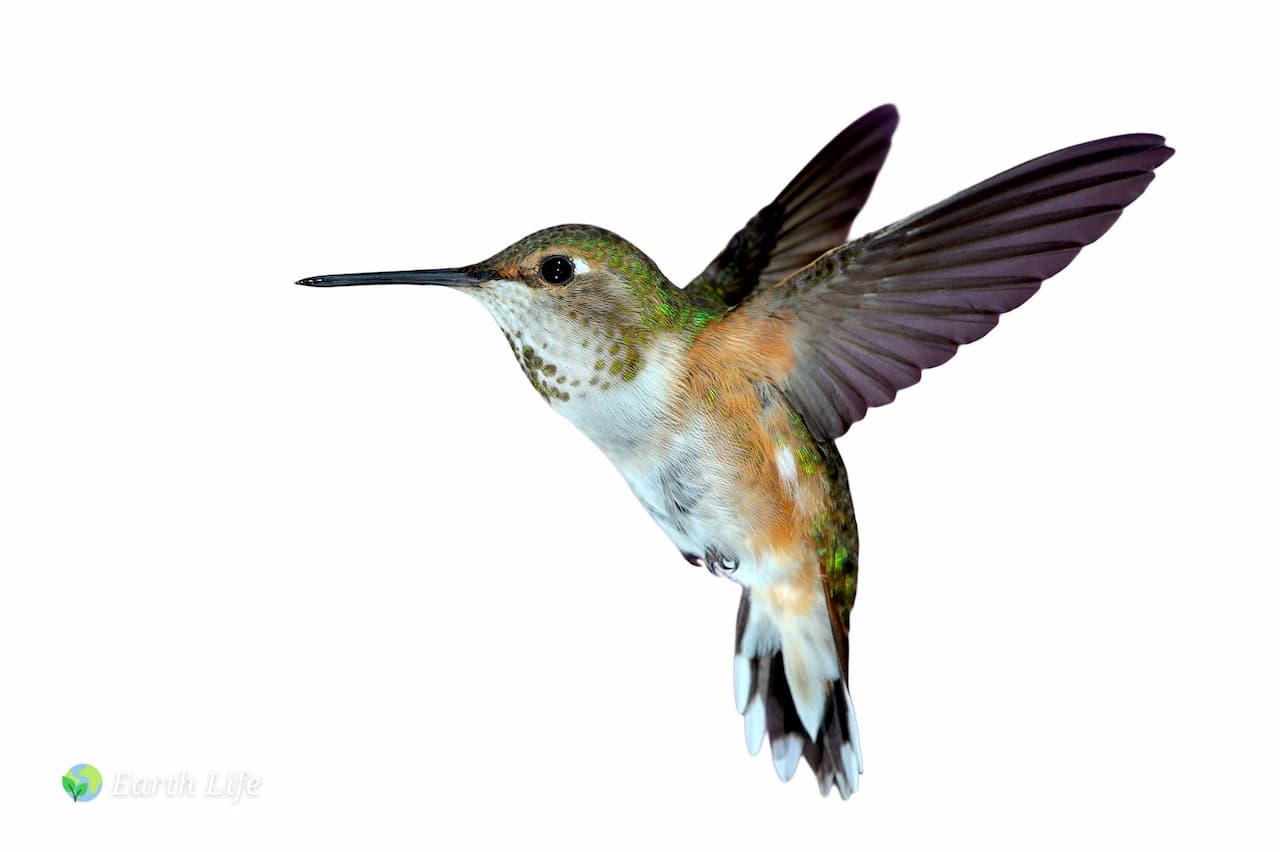
WHITE Hummingbird Sightings (Leucistic / Albino) – Probably a Ruby-throated.
Rufous Hummingbirds (Selasphorus rufus) – Uncomming wintering visitors.
These hummingbirds are usually found in gardens and at feeders. These birds are fearless, and are known for chasing away other hummingbirds and even larger birds, or rodents away from their favorite nectar feeders and flowers.
Males can easily be identified by their glossy orange-red throats.
Females have whitish, speckled throats, green backs and crowns, and rufous, white-tipped tail feathers.
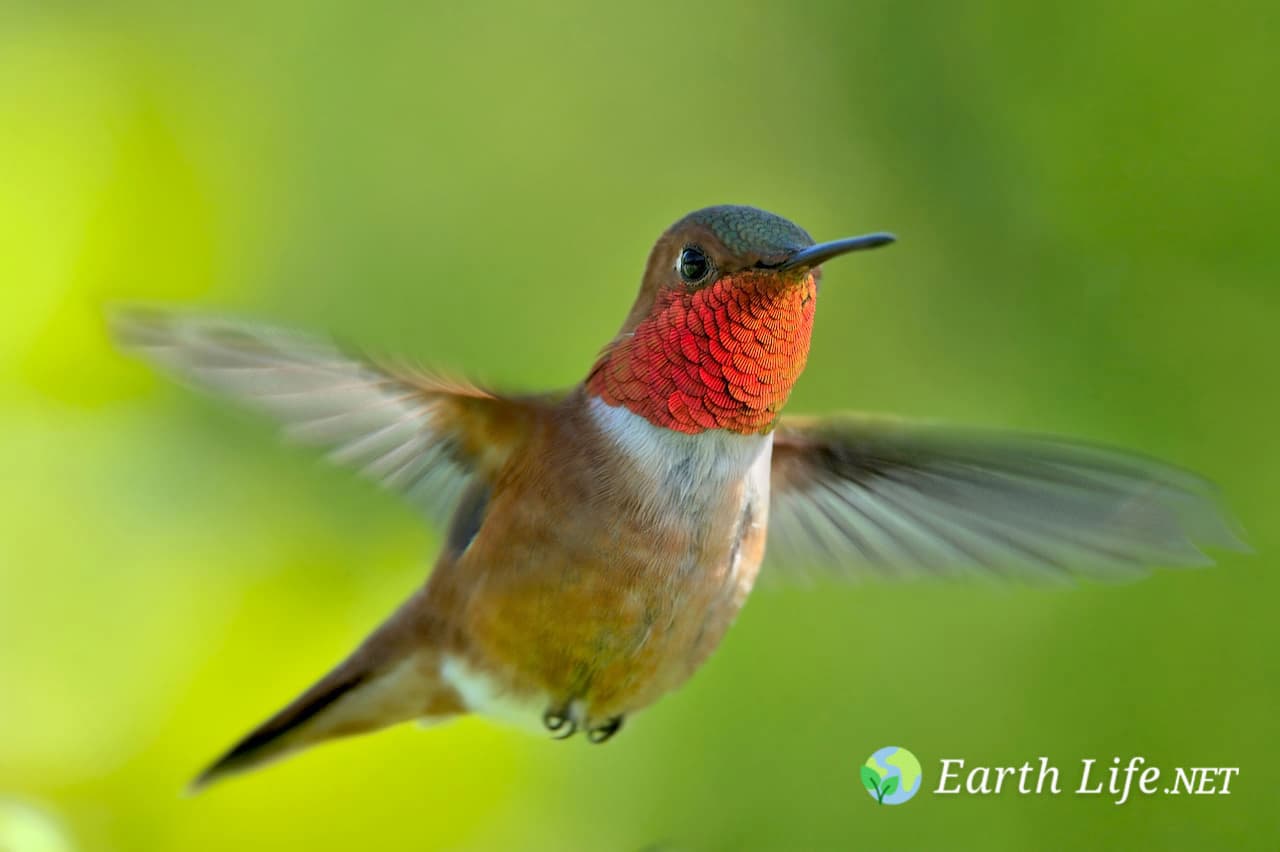

Rufous Hummingbird versus the similar Ruby-throated Hummingbird (Identification)
Broad-billed Hummingbirds (Cynanthus latirostris) – Accidental / Vagrants – These mostly Mexican hummingbirds venture into the United States regularly; they mostly visit the southern parts – but a few vagrants travel as far north as Wisconsin. There are two state records; one was banded Jan 2008 in Rockville south of Charleston by Bill Hilton Jr. of Operation RubyThroat.
The male is glossy green above and on the chest. He has a deep blue throat. His straight and slender beak is red with a black tip. His slightly forked tail is dark above, and the under tail feathers are white.
The female is less colorful than the male. Her throat, chest and belly are light to medium grey. She has a white stripe over each eye.
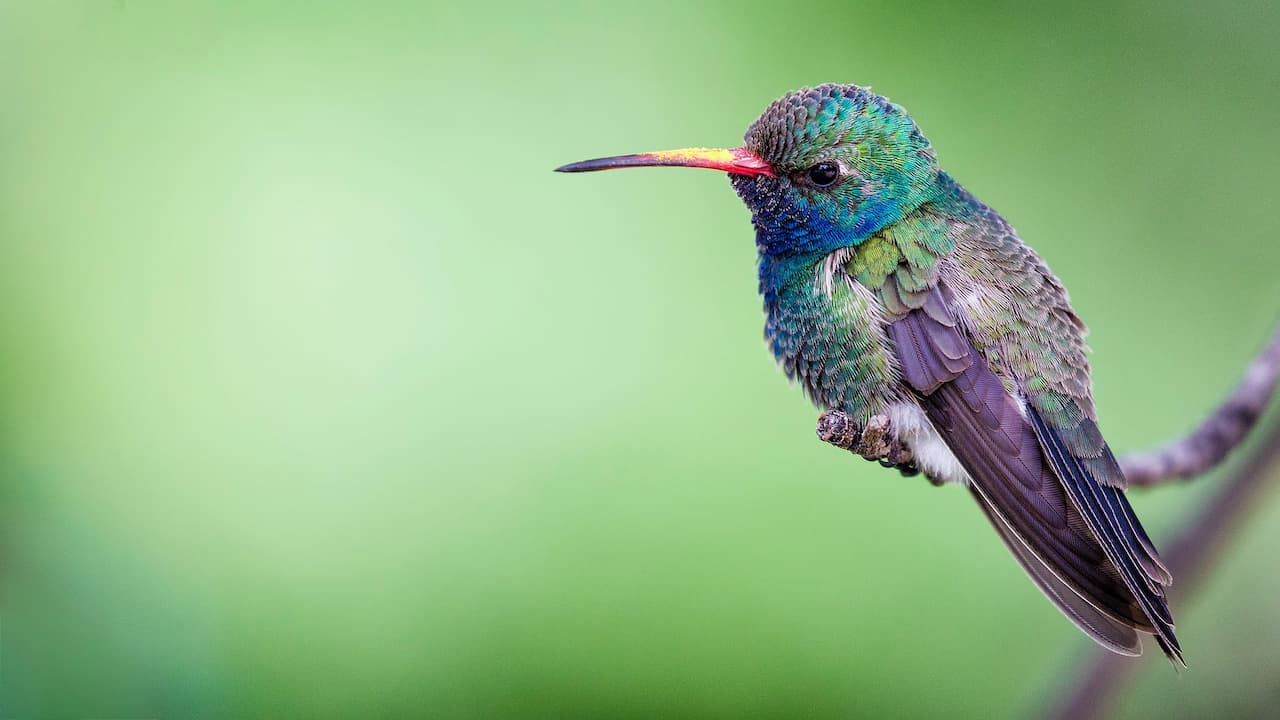
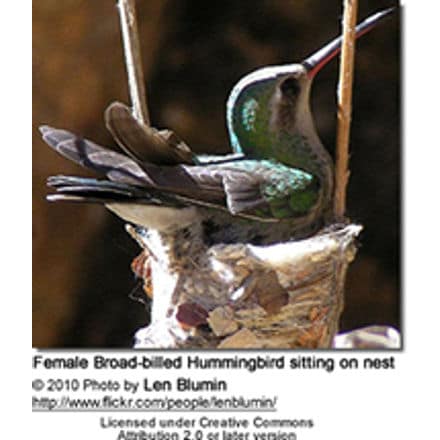
Buff-bellied Hummingbirds (Amazilia yucatanensis) – Accidental Vagrant – only one state record; banded Dec 2001 in Columbia by Bill Hilton Jr. of Operation RubyThroat;
The male’s throat is a metallic golden green and the red, dark-tipped bill is straight and slender. Back and head are mostly metallic olive. The lower chest ranges in coloration to whitish with various shades of grey or green, or buffy (yellowish-brown).
The tail and primary wing feathers are rufous (reddish-brown) and slightly forked. The underwing is white.
The female is generally less colorful than the male and has a a dark upper bill
Blue-throated Hummingbirds (Lampornis clemenciae) – Rare vagrants
The upper plumage is dull green, fading to a medium grey on the underside. It has white stripes behind the eyes and a narrower stripe extending backward from the corner of its relatively short bill, next to a blackish cheek patch.
The male can be identified by the iridescent blue throat patch (gorget), which may appear black or grey color in poor light.
The female and young have grey throats.

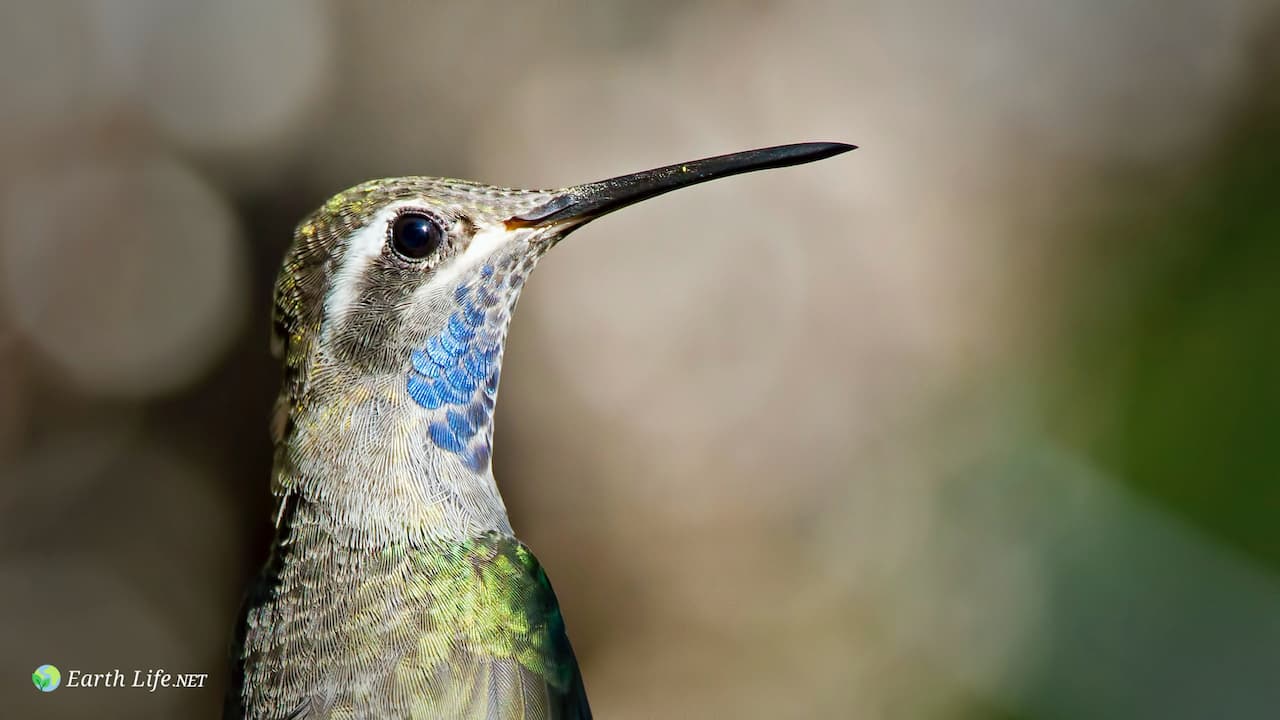
Black-chinned Hummingbirds (Archilochus alexandri) – Rare vagrants.
The male has a black, shimmering throat with a purple edge and pale feathers below that create a collar. However, unless the light is just right, the head looks all black. His back is green and there are some green feathers covering the chest.
The female is pale below (sometimes with a slightly speckled throat) and her back is green.
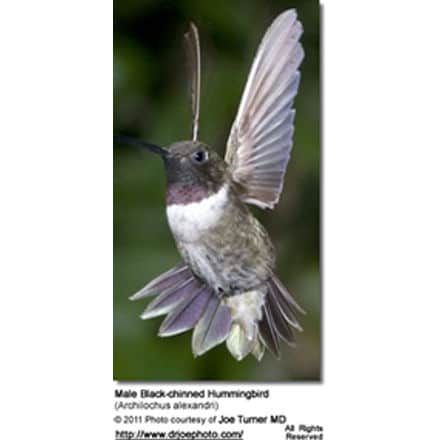

Calliope Hummingbirds (Stellula calliope) – Rare vagrants.
The smallest breeding bird in North America. They are most easily confused with the Rufous Hummingbirds and the Broad-tailed Hummingbird.

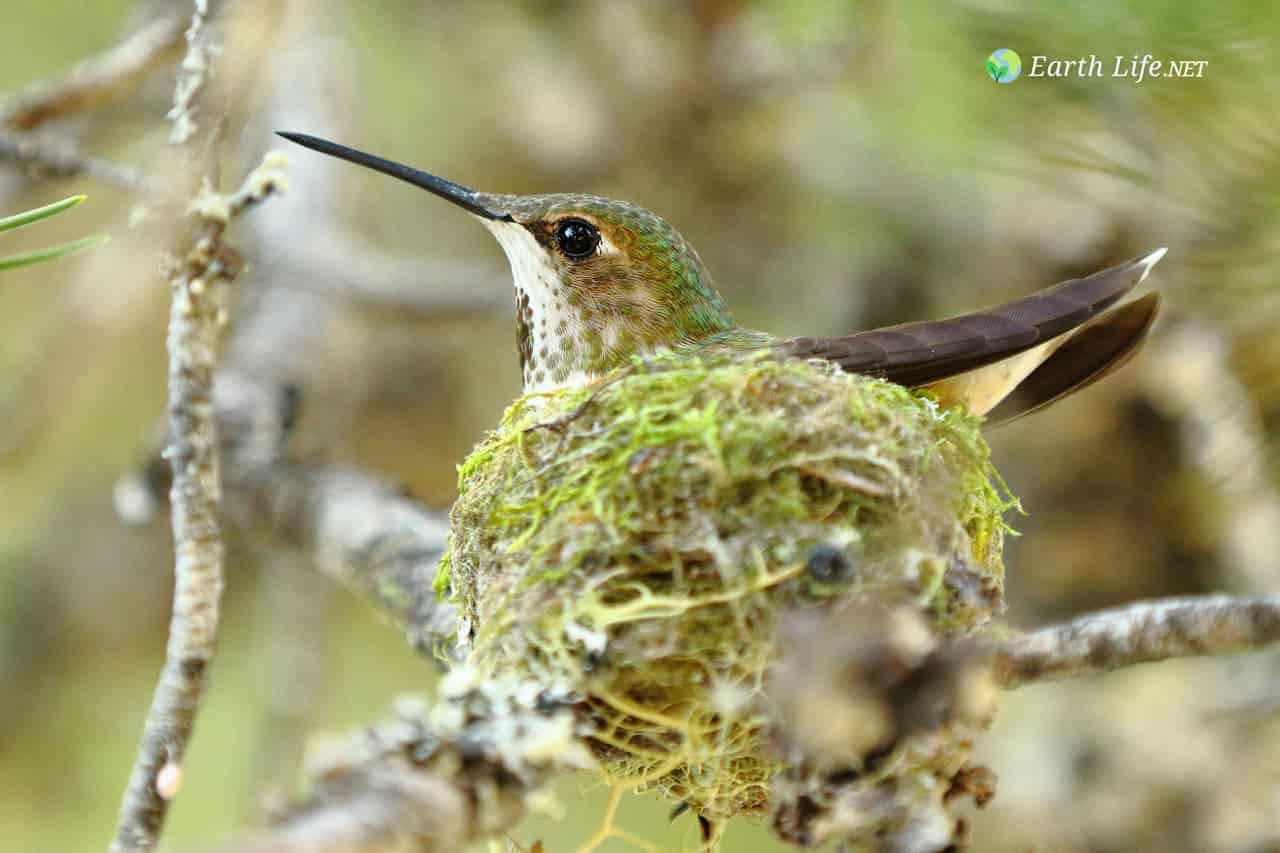
Allen’s Hummingbirds (Selasphorus sasin) – Rare vagrants – They are confused with the Rufous Hummingbird, but the Allen’s can be identified by the green back whereas the Rufous Hummingbird has a coppery back.
The male has a throat that ranges in color from orange-red to yellow-orange, a back that is bright green, a rump that is rufous and its tail feathers are rufous tipped in black.
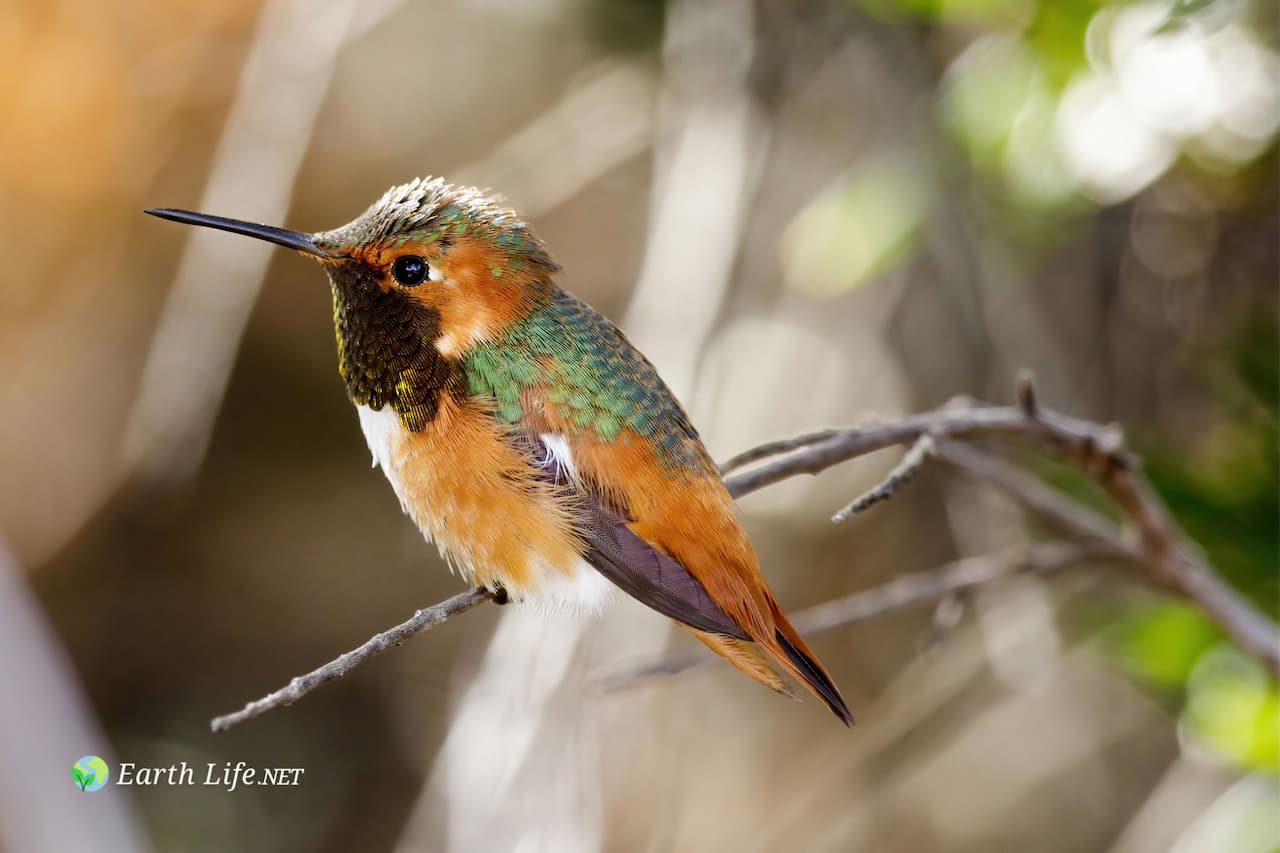
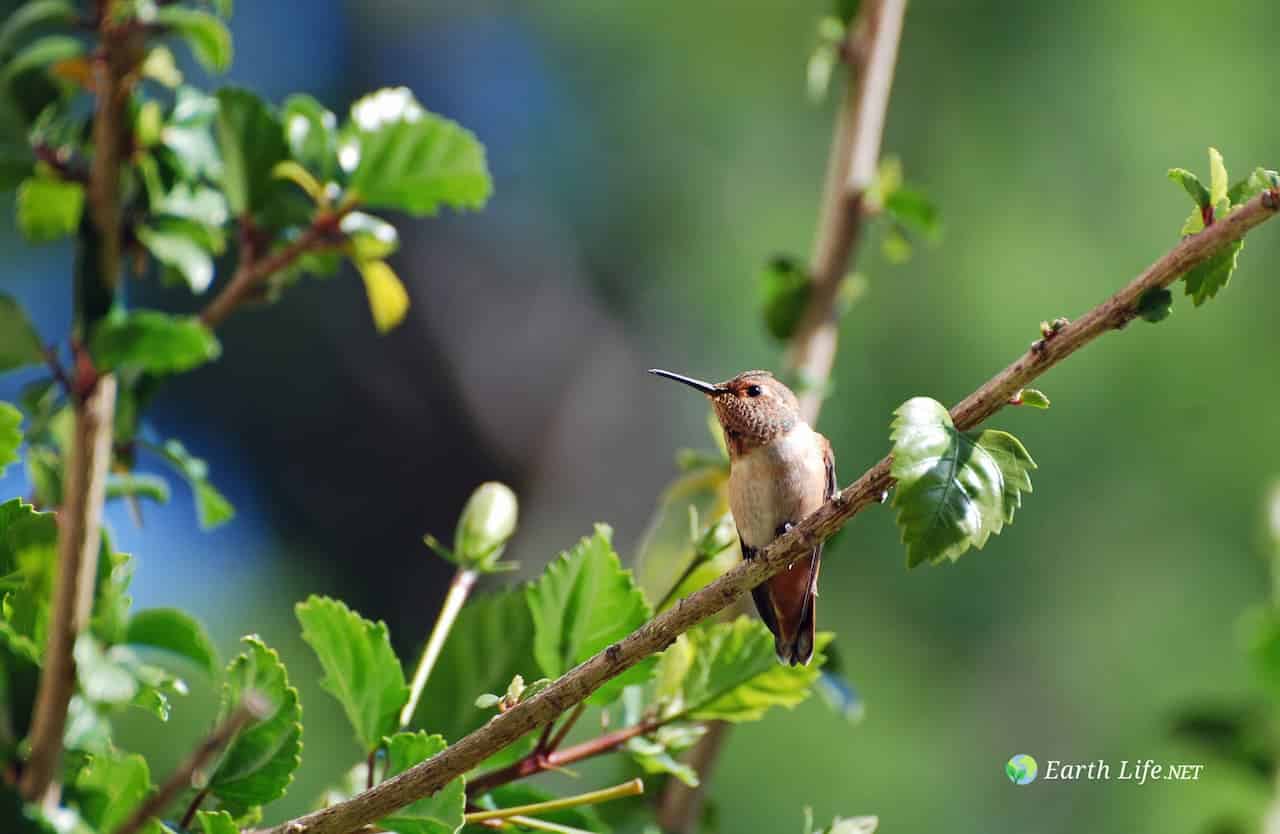
Is it a Hummingbird or an Insect?
The Hawk Moths (often referred to as “Hummingbird Moth”) is easily confused with hummingbirds, as they have similar feeding and swift flight patterns. These moths also hover in midair while they feed on nectar.
Moths have a couple of sensors or “antennas” on top of the head, which are key identifiers.

